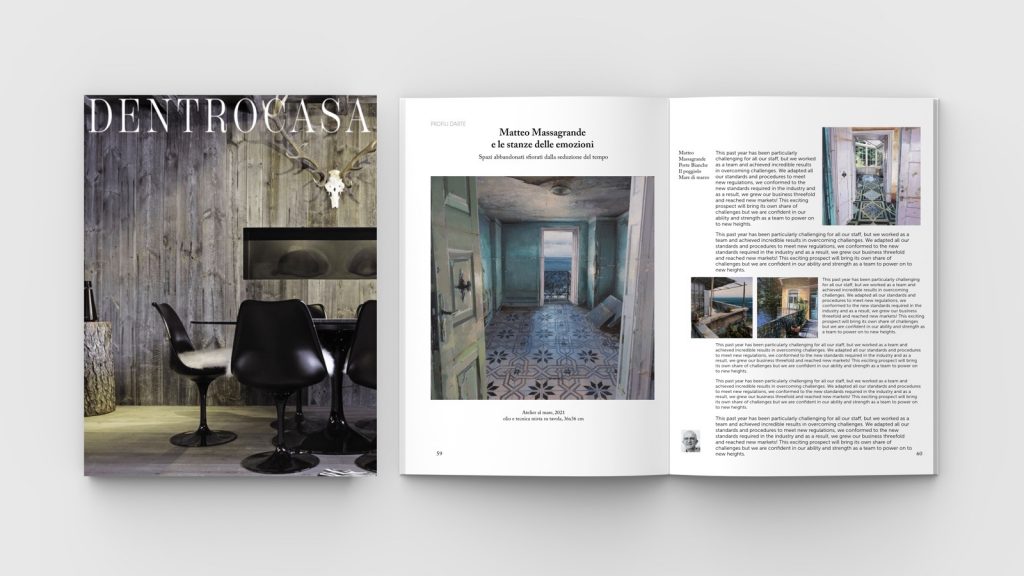Dentrocasa | Matteo Massagrande
Matteo Massagrande and the rooms of emotions. Abandoned spaces touched by the seduction of time
Article by Gianbattista Bonazzoli
Matteo Massagrande, from Padua, one of the greatest representatives of the new Italian figuration, is a painter and engraver, as well as a profound connoisseur of the history of ancient and contemporary art. His painting is defined as Philosophical Realism.
Matteo Massagrande, treasured the memories of his childhood, first and foremost the rooms of the large villa where he lived as a child. And that’s where our interview starts.
The love for art dates back to an early age and, over the years, this passion has also grown thanks to the study of the great masters of the past. Can you tell us what struck you and what traces of the great masterpieces we can see in your paintings?
“Passion in childhood is an unknown concept. I observed with a curiosity, probably out of the ordinary, places and environments that for other of my peers were absolutely insignificant. I entered another dimension and lived a kind of life parallel to the domestic one we were all used to. This what I now call emotion became a certainty when I visited the Civic Museum of my city with my father for the first time. I don’t remember the words, but I definitely remember the thought. This is my home. Everything was mine in that place, never seen before, yet familiar. At that time, the entire cycle of detached frescoes by Tommaso da Modena on the stories of Sant’Orsoia was on display. I looked at every grain of plaster, I’m not kidding, every tear in the paint, every layer, every color, every brushstroke. I wasn’t interested in the story itself, but I felt happy in the vision of it all. From that day on, my father was forced to accompany me to that place at least weekly, and for this I will always be grateful. My way of seeing the world in a certain way has found in the museum the method to tell it. In my works, more than traces of great masterpieces (also because I am not a quotationist) you can see the respect for time, the cult of color, the search for composition and the technical wisdom of the great masters. At first, of course, I studied the Venetian Masters, then Italian painting, then Flemish painting and the dialogue between these two.
His works are not inspired by any photographs. So how does one of your paintings come about? What suggestions do you start from?
“Photography has been a very important visual medium for artists for more than a hundred years now. But imagining repainting a photograph is a sterile operation that doesn’t interest me. The starting point for me is always compositional. A search for shapes in harmony with each other. I give more importance to this than to the subject itself. This applies to painting interiors, still lifes, portraits, or landscapes. It allows me to achieve a balance between lights, colors, shapes and volumes that form the vision. It’s a slow and gradual process, thought out in the design. I’m quicker in pictorial writing. Painting for me is a living element and must always be nourished with research and technical insights, which sometimes last even years, in my case, which, however, I cannot do without”.
Admiration and respect for tradition are the basis of his work. How do you place your artistic practice within a contemporary landscape that often prefers languages that are anything but traditional?
“I would like to point out that I feel a great interest in every form of painting and artistic expression, of all eras, including contemporary currents, even the most daring. I continue to study and get curious, more than before. I am convinced more than ever that distinctions should not be made between languages, but between the quality of the works. Where to place my painting is not up to me to determine, it is the task of scholars, historians and art critics. I, blessed, paint.”

Published on 15/02/2024
Tag: MATTEO MASSAGRANDE



